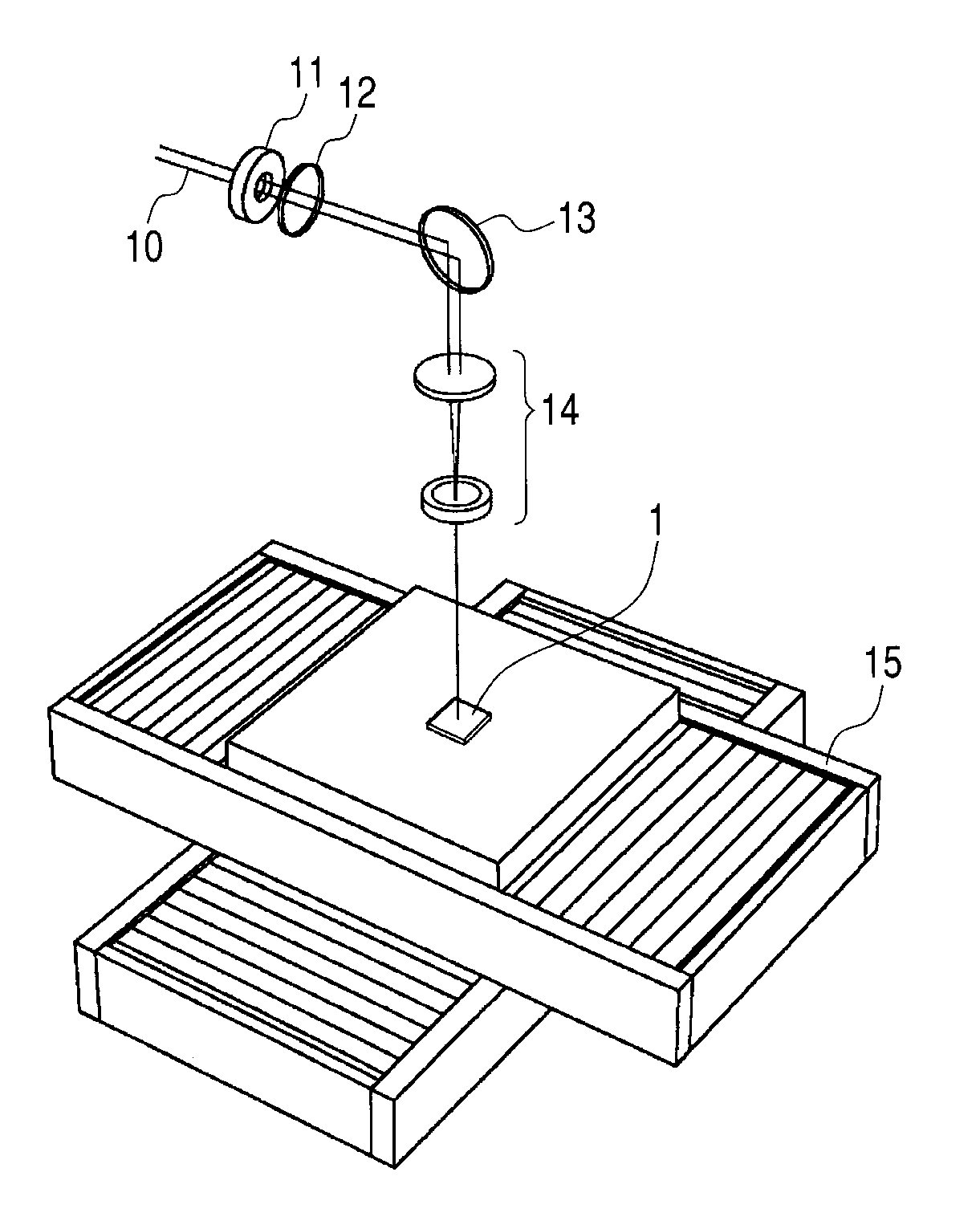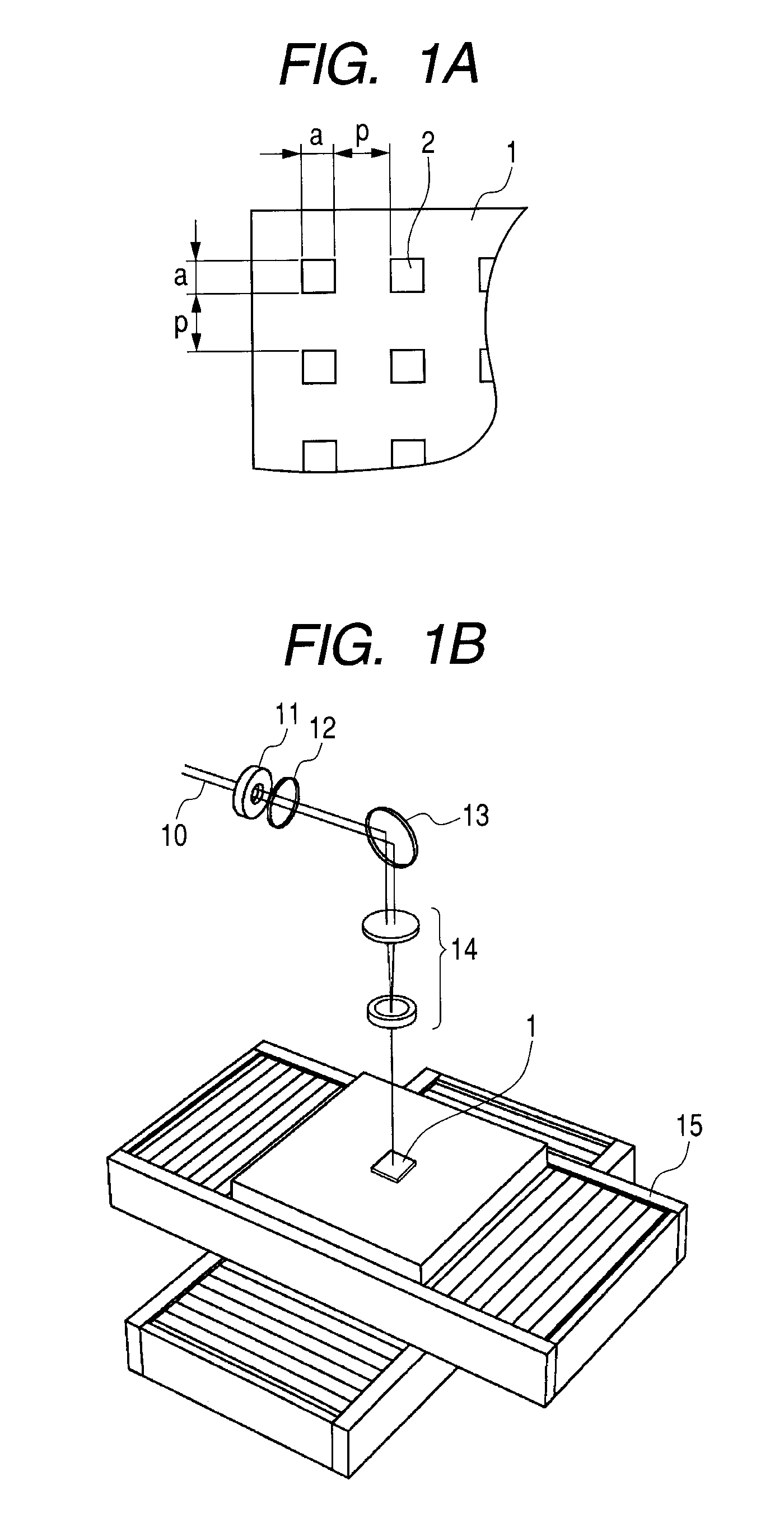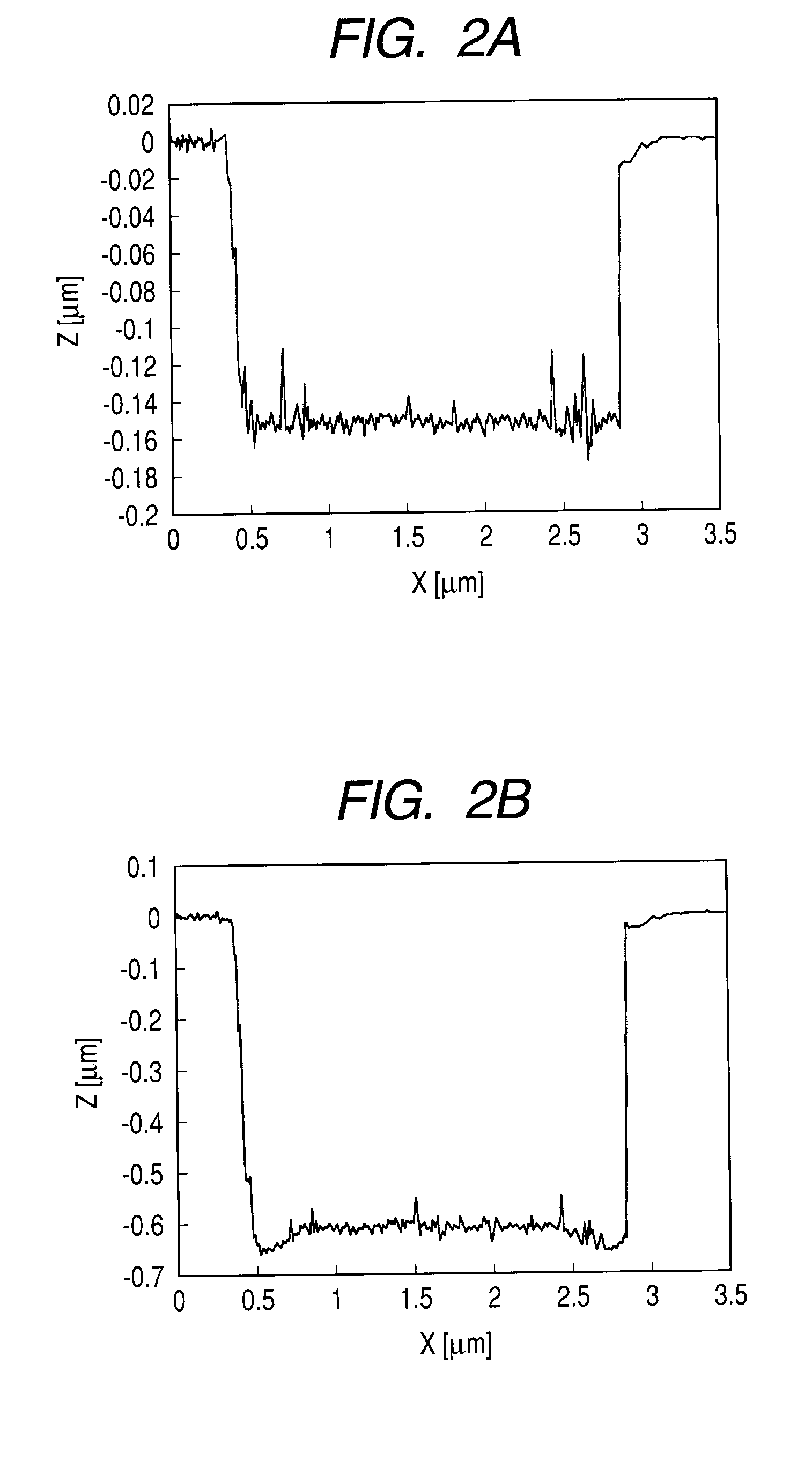Processing method
- Summary
- Abstract
- Description
- Claims
- Application Information
AI Technical Summary
Benefits of technology
Problems solved by technology
Method used
Image
Examples
example 1
[0039]The processing method described in the above embodiment will be specifically described. As a basic shape formation step, a focused ion beam processing observation apparatus (hereinafter, referred to as FIB apparatus) was used to form a recess shaped pattern 2 shown in FIG. 1A on a workpiece 1. The workpiece 1 was a copper plate; and the recess shaped pattern 2 which was a square having one side length a of 2.5 μm and was smaller in difference in height than a desirable uneven shape was formed on the copper plate in a grid-like pattern at an interval p of 4.2 μm. In this step, the workpiece 1 was placed on a work stage of the FIB apparatus; a gallium ion beam was accelerated at an accelerating voltage of 40 kV; and a beam focused by an electron lens was applied to a workpiece surface via an aperture of 150 μm diameter. In this way, ablation processing of the workpiece surface was performed, and the processing was performed so that the depth of the pattern 2 became 0.15 μm. A cr...
example 2
[0045]FIG. 3 shows a processing apparatus used in a basic shape formation step and a shape growth step of the present example. A laser source used (not shown) was a titanium sapphire regenerative amplifier having a wavelength of 800 nm, a pulse width of 130 fs, and a repeating frequency of 1 kHz. A laser beam 31 having a wavelength of 800 nm, a pulse width of 130 fs, a repeating frequency of 1 kHz, a pulse energy of 1.2 mJ, and a beam diameter of 8 mm was obtained from the oscillation source. This laser beam was clipped to a beam diameter of 5 mm via an aperture 32; and divided into two beams by a beam splitter 36 via an attenuator 33, a shutter 34, and a mirror 35. One beam was passed through a shutter 37 and a mirror 38, condensed by a condenser lens 39, and applied to a surface of a workpiece 21 placed on a stage 45. The other beam was passed through an optical path length regulator 40, an ND filter 41, and a mirror 42; and was applied to the surface of the workpiece 21 by a cond...
PUM
| Property | Measurement | Unit |
|---|---|---|
| Time | aaaaa | aaaaa |
| Time | aaaaa | aaaaa |
| Width | aaaaa | aaaaa |
Abstract
Description
Claims
Application Information
 Login to View More
Login to View More - R&D
- Intellectual Property
- Life Sciences
- Materials
- Tech Scout
- Unparalleled Data Quality
- Higher Quality Content
- 60% Fewer Hallucinations
Browse by: Latest US Patents, China's latest patents, Technical Efficacy Thesaurus, Application Domain, Technology Topic, Popular Technical Reports.
© 2025 PatSnap. All rights reserved.Legal|Privacy policy|Modern Slavery Act Transparency Statement|Sitemap|About US| Contact US: help@patsnap.com



